Table of content
Poached fresh squid, known as bái zhuó xiān yóu yú in Chinese cuisine, is a quintessential dish that embodies the philosophy of minimalist cooking. Rooted in Cantonese traditions, this recipe prioritizes the natural flavors of the ocean, using simple techniques to transform tender squid into a culinary masterpiece. Often served as an appetizer or a light main course, this dish is celebrated for its delicate texture, subtle sweetness, and versatility. Below, we explore the art of preparing this dish at home, ensuring every bite delivers the essence of the sea.
Understanding the Dish: The Essence of Poaching
Poaching, or bái zhuó, is a cooking method that involves gently simmering ingredients in liquid—usually water—at a temperature just below boiling. This technique preserves the squid’s tender texture while eliminating any fishy aromas. Unlike frying or grilling, which can mask the squid’s inherent flavor, poaching allows its briny sweetness to shine. The result is a dish that feels both luxurious and effortless, a testament to the adage that the finest ingredients require the least intervention.
Ingredients: Quality Over Quantity
The success of this dish hinges on two factors: the freshness of the squid and the balance of the dipping sauce. Here’s what you’ll need:
For the Squid
- 1 lb (450g) fresh whole squid: Look for specimens with glossy skin, firm flesh, and a mild oceanic scent. Avoid those with cloudy eyes or a strong ammonia smell, indicators of spoilage.
- 1 tbsp kosher salt: For cleaning the squid.
- 4 cups water: For poaching.
- 3 slices fresh ginger: To impart a subtle warmth.
- 1 tbsp Shaoxing wine (optional): Enhances aroma and neutralizes any lingering odors.
For the Dipping Sauce
- 3 tbsp light soy sauce: Use a premium brand for depth of flavor.
- 1 tbsp Chinese black vinegar: Adds a tangy kick.
- 1 tsp sesame oil: For nutty richness.
- 1 tsp granulated sugar: Balances the acidity.
- 1 red chili, thinly sliced (adjust to taste): Provides mild heat.
- 2 garlic cloves, minced: Adds pungency.
- 1 tbsp fresh cilantro, chopped: For freshness.
- 1 tsp toasted sesame seeds (optional): Garnish for texture.
Step-by-Step Preparation
Cleaning the Squid
Cleaning squid is a ritual that demands precision. Start by rinsing the squid under cold water. Gently pull the head away from the body; the entrails should come with it. Discard the ink sac (unless preparing squid ink pasta) and the hard beak near the tentacles. Peel off the purple skin using your fingers—this step is crucial, as the skin can toughen during cooking. Rinse the body cavity thoroughly to remove any residual grit.
For the tentacles, separate them just below the eyes and discard the upper portion. Use the back of a knife to scrape off any suction cup membranes if desired, though this is optional. Pat the squid dry with paper towels and set aside.

Preparing the Poaching Liquid
In a large pot, bring 4 cups of water to a gentle simmer. Add the ginger slices and Shaoxing wine (if using). The water should hover between 185–195°F (85–90°C)—small bubbles should form at the bottom, but the surface should remain calm. Avoid boiling, as aggressive heat will toughen the squid.
Poaching the Squid
Submerge the squid bodies and tentacles into the simmering liquid. Cook for 5–2 minutes for small squid (under 6 inches) and 5–3 minutes for larger specimens. The flesh will turn opaque and curl slightly. Overcooking is the enemy here; err on the side of undercooking, as residual heat will continue cooking the squid after removal.
Shocking in Ice Water
Immediately transfer the poached squid to an ice bath. This stops the cooking process and firms the flesh, resulting in a tender, not rubbery, texture. Let it chill for 2–3 minutes, then drain thoroughly.
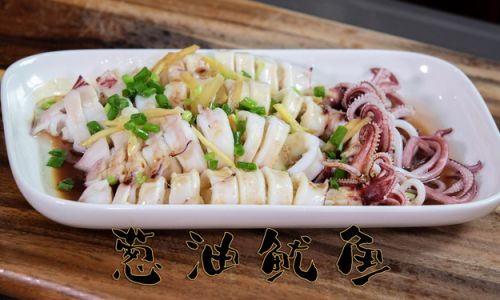
Slicing and Presentation
Pat the squid dry again. Slice the bodies into ½-inch rings and halve the tentacles if they’re large. Arrange the squid on a serving platter, garnished with cilantro and sesame seeds.
Crafting the Dipping Sauce
While the squid poaches, prepare the sauce. In a small bowl, whisk together soy sauce, vinegar, sesame oil, and sugar until the sugar dissolves. Stir in the chili, garlic, and cilantro. Adjust seasoning to taste—some prefer a sweeter ratio, while others lean into the vinegar’s tang.
Serving Suggestions and Pairings
- As an Appetizer: Serve alongside steamed jasmine rice and a plate of blanched bok choy for a balanced meal.
- In Lettuce Wraps: Wrap sliced squid, herbs, and sauce in butter lettuce leaves for a refreshing handheld bite.
- With Congee: Add to a bowl of rice porridge for a comforting breakfast or late-night snack.
Expert Tips for Perfect Poached Squid
- Timing is Everything: Squid cooks in minutes. Test doneness by slicing a ring—if it’s translucent in the center, it needs more time.
- Avoid Overcrowding: Poach squid in batches if needed. Overcrowding lowers the water temperature, leading to uneven cooking.
- Enhance with Aromatics: Experiment with lemongrass, kaffir lime leaves, or citrus zest in the poaching liquid for a tropical twist.
- Storage: Leftovers keep refrigerated for up to 2 days. Reheat gently in a steamer to preserve texture.
Nutritional Benefits
Squid is a lean protein powerhouse, rich in vitamin B12, selenium, and copper. A 3.5-oz (100g) serving provides 16g of protein with minimal saturated fat, making it a smart choice for health-conscious eaters. The dipping sauce, while flavorful, adds minimal calories, allowing the squid’s nutritional profile to take center stage.
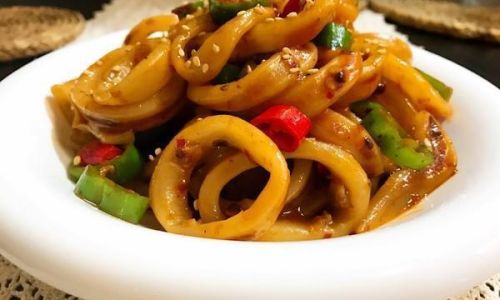
Cultural Context: The Art of Simplicity
In Cantonese cuisine, bái zhuó reflects a reverence for freshness. Historically, coastal communities relied on this method to prepare daily catches, emphasizing the ocean’s bounty without embellishment. Today, the dish remains a staple at banquets and family dinners, symbolizing harmony between ingredient and technique.
Variations and Creative Twists
- Spicy Sichuan-Style: Add Sichuan peppercorns and doubanjiang (chili bean paste) to the poaching liquid for a numbing heat.
- Citrus-Infused: Serve with a ponzu sauce (soy sauce mixed with citrus juice) and shiso leaves.
- Grilled Finish: After poaching, briefly char the squid on a grill for smoky depth.
Troubleshooting Common Issues
- Rubbery Texture: Overcooking is the primary culprit. Reduce poaching time by 30 seconds and shock immediately.
- Fishy Aftertaste: Ensure thorough cleaning and use fresh squid. The ginger and Shaoxing wine also help neutralize odors.
- Bland Flavor: Amplify the dipping sauce with minced ginger, scallions, or a dash of fish sauce.
Conclusion: A Dish That Celebrates the Sea
Poached fresh squid is more than a recipe—it’s a meditation on simplicity. By honoring the squid’s delicate nature and pairing it with a vibrant sauce, this dish bridges tradition and modernity. Whether you’re a seasoned home cook or a novice in the kitchen, mastering this technique unlocks a world of culinary possibilities. So next time you spot pristine squid at the market, seize the opportunity to create a meal that’s both humble and extraordinary. After all, the ocean’s gift is best enjoyed in its purest form.
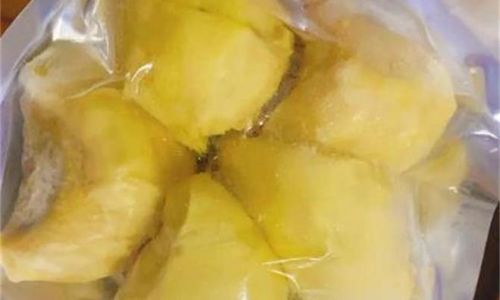
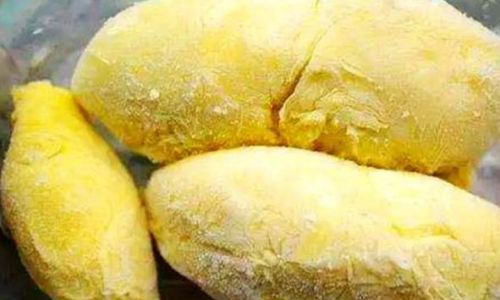
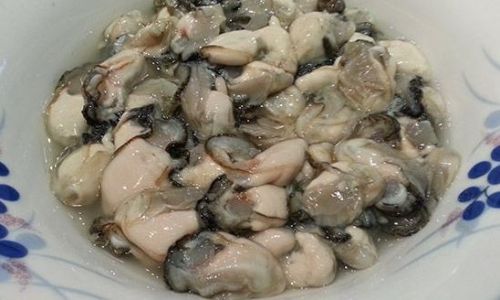
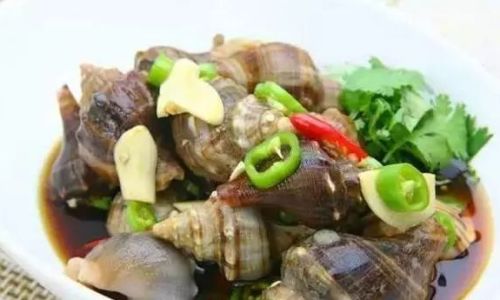
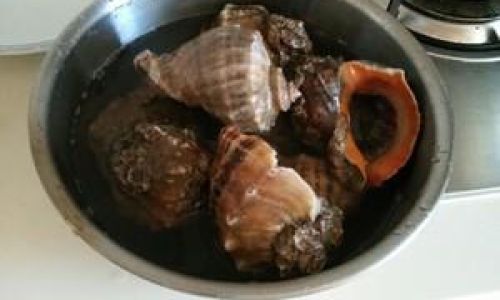
0 comments